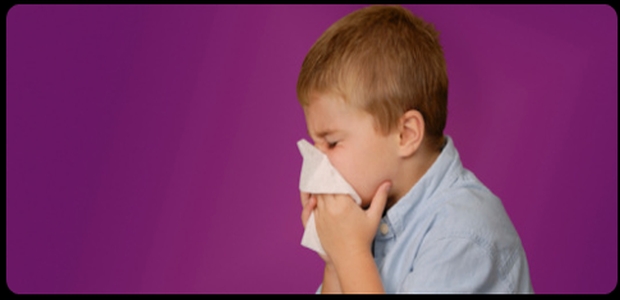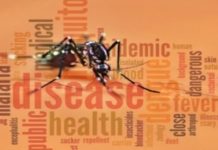All living organisms encounter diseases at some point in their lives. Diseases like chicken pox usually occur in children, so that it gives them immunity for the rest of their life. When the disease-causing bacteria enter a child’s body, the immune system produces antibodies to fight it. But the action isn’t fast enough to prevent the bacteria or antigen from causing the infection, hence the child falls sick. There are certain diseases which are prevented by giving vaccination to children. After all, it is always better to prevent a disease than to treat it. We continue with our list of common diseases which are commonly observed in children.
Fifth Disease
You might know it better as “slapped cheek syndrome.” Kids ages 3 and under are the most vulnerable to fifth disease, which causes a bright-red rash on the cheeks. Your child may not have any other illness symptoms though she could also have a mild fever, a runny nose, and a secondary, lacy-looking rash on her torso. Fifth disease often spreads like wildfire through child-care centers and preschools. Once the rash comes out, your child is no longer contagious, and it will subside on its own. A small percentage of kids who get it will develop joint pain (let your doctor know right away if this occurs). Also, contact your ob-gyn if your child gets fifth disease while you’re pregnant, as the virus can cause complications.
Strep Throat
Babies and toddlers rarely get it. Young kids are most likely to become infected by streptococcus bacteria if an older sibling has the illness. Although strep spreads mainly through coughs and sneezes, your child can also get it by touching a toy that an infected kid has played with. The classic symptom is throat pain, which can be so severe that he may have trouble swallowing or even talking. He may develop a fever, swollen lymph nodes, and abdominal pain. See your doctor if you suspect your child has strep. He may be given a rapid test (which won’t pick up every strep strain) and a throat culture (which takes 48 hours but is definitive), says Jay Homme, M.D., a pediatrician at the Mayo Clinic Children’s Center, in Rochester, Minnesota. If the test is positive, antibiotics will likely help your child feel better quickly, but keep him home for at least another 24 hours after his first dose to reduce the risk of passing the bacteria to someone else.
Influenza
Get the vaccine early—it takes two weeks to kick in fully. The flu comes on hard and fast: a fever of up to 103°F, body aches and chills, a headache, sore throat, cough, and sometimes also vomiting and diarrhea. It’s a miserable wintertime illness that often lasts for more than a week and can lead to dangerous complications, including pneumonia. Thankfully, you can greatly reduce your child’s risk by scheduling an annual flu vaccine, which can be given as a shot or, for kids over 2, as a nasal spray. The vaccine isn’t foolproof (since strains of the virus vary year by year), but if she gets influenza despite being vaccinated, her symptoms should be far less severe, points out Dr. Hirschenfang. If you suspect your child has the flu, make an appointment with your pediatrician right away. He may recommend putting her on an antiviral medication such as Tamiflu, which can help speed her recovery.
Also Read: Medical Devices that Changed the World
Pinkeye
It can spread through your household quickly. This inflammation of the tissue lining the eyelids (also called conjunctivitis) causes redness, yellowish discharge, blurry vision, and crusty eyes. Pinkeye in younger kids is most often caused by a bacterial infection, which must be treated with antibiotic drops. (Note: It can also result from a virus, which doesn’t require medication, or allergies or an irritant in the air, which can be addressed with allergy eye drops) Your child shouldn’t return to class until he’s been treated for at least 24 hours. Have him wash his hands regularly and avoid touching his eyes and sharing hand towels, blankets, or pillows so he doesn’t infect anyone else in your home.
Pinworms
See your doctor if you notice your kid scratching her bottom. Blame kids’ poor hygiene for the prevalence of these tiny parasites. When an infected child scratches her bottom and doesn’t clean her hands, she can easily pass them on to other kids (who get infected when they put their hands in their mouth). The eggs move down the digestive system, hatch, and lay their eggs around the anus (yuck!). Your doctor will give you special tape to affix at night and will analyze it for pinworms and eggs. Only one or two doses of prescription medication are needed to get rid of them, but you’ll have to wash her towels and bedding in hot water.
There are many more diseases which exist and can be fatal for children. For some diseases, parents need to be cautious and well prepared. A healthy childhood can be the most precious gift parents can give to their children.
-end-




































